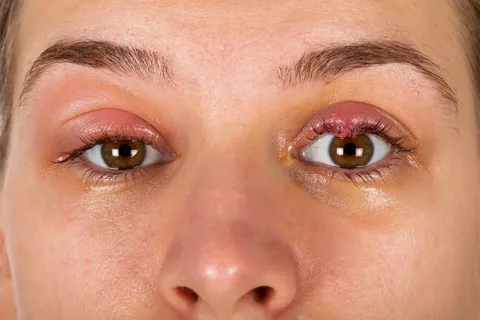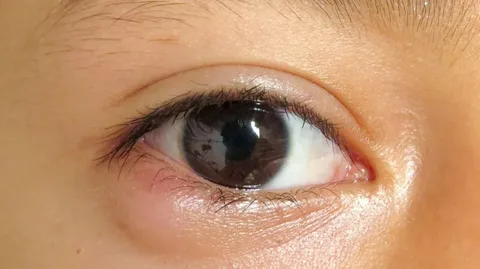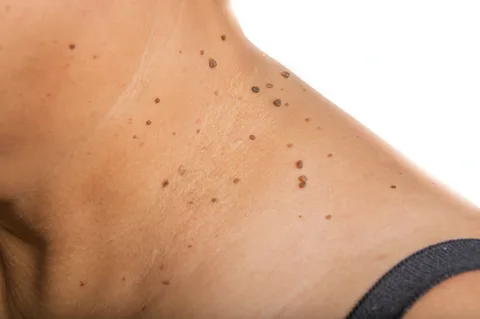Eyelid bumps can be both a cosmetic concern and a source of discomfort. They can appear suddenly and may lead to anxiety about what they are and how to treat them. In this article, we will explore the four main types of eyelid bumps, their causes, symptoms, and the best treatment options available. Whether you’ve noticed a bump on your eyelid or are simply curious, this guide aims to provide you with comprehensive information.
Understanding Eyelid Bumps
Eyelid bumps can occur for various reasons, including infections, allergies, or underlying health issues. They can vary in size, shape, and color, and may be accompanied by other symptoms such as redness, swelling, or itching. While most eyelid bumps are benign and not a cause for concern, understanding what type you have can help in deciding the best course of action.
Common Symptoms of Eyelid Bumps
Before diving into the types of eyelid bumps, let’s look at some common symptoms that might accompany them:
- Redness: The area around the bump may appear red or inflamed.
- Swelling: The eyelid itself might be swollen, making it difficult to open or close the eye.
- Itching or Irritation: Some bumps may cause discomfort or a persistent itch.
- Discharge: In some cases, there may be discharge from the bump, especially if it’s infected.
If you experience severe pain, vision changes, or persistent symptoms, it’s crucial to consult a healthcare professional.

1. Styes
What is a Stye?
A stye, or hordeolum, is a painful lump that forms on the edge of the eyelid due to an infection of the oil glands. It typically appears as a red, swollen bump and can make the eye feel tender and irritated.
Causes of Styes
Styes are usually caused by bacteria, particularly Staphylococcus, which can enter the oil glands through hair follicles. Factors that may contribute to the development of a stye include:
- Poor Hygiene: Not cleaning your eyelids regularly can lead to a buildup of bacteria.
- Stress: Increased stress levels can weaken the immune system.
- Blocked Glands: Conditions that lead to clogged oil glands, such as blepharitis.
Symptoms of Styes
- Pain or tenderness at the bump site
- Redness and swelling of the eyelid
- Watery or crusty discharge
- A sensation of a foreign object in the eye
Treatment for Styes
Most styes will resolve on their own within a week or two. However, there are several effective treatments you can try:
- Warm Compresses: Applying a warm, damp cloth to the affected area can help reduce swelling and promote drainage.
- Over-the-Counter Pain Relievers: Medications like ibuprofen or acetaminophen can alleviate pain.
- Avoid Squeezing: Do not try to pop or squeeze the stye, as this can worsen the infection.
If the stye persists or worsens, a doctor may prescribe antibiotic ointments or, in severe cases, may need to drain it surgically.
2. Chalazia
What is a Chalazion?
A chalazion is a painless bump that forms on the eyelid due to a blocked oil gland. Unlike a stye, chalazia tend to develop more slowly and can be larger.
Causes of Chalazia
Chalazia occur when the oil-producing glands become blocked. They are more common in individuals with:
- Chronic Blepharitis: Inflammation of the eyelids can increase the risk.
- Skin Conditions: Conditions like rosacea or seborrheic dermatitis can also contribute.
- Stress: Similar to styes, stress can impact oil production and lead to blockages.
Symptoms of Chalazia
- A firm, painless bump on the eyelid
- Swelling and redness in some cases
- Possible blurred vision if the chalazion is large enough to press against the eye
Treatment for Chalazia
Chalazia can take time to resolve on their own, but treatment options include:
- Warm Compresses: Like styes, applying a warm compress can help promote drainage.
- Topical Steroids: A doctor may prescribe steroid ointments to reduce inflammation.
- Surgical Drainage: If the chalazion is persistent, a healthcare professional may need to drain it.

3. Papillomas
What are Papillomas?
Papillomas, or eyelid warts, are benign growths that can appear on the eyelids. They are usually caused by the human papillomavirus (HPV) and are typically painless.
Causes of Papillomas
These growths are often linked to:
- Viral Infection: HPV is a common cause of papillomas.
- Skin Irritation: Chronic irritation or damage to the eyelid can trigger growths.
- Age: Older adults may be more prone to developing papillomas.
Symptoms of Papillomas
- A small, flesh-colored or brown bump on the eyelid
- Generally painless, but may cause irritation
- May grow in size over time
Treatment for Papillomas
Most papillomas don’t require treatment unless they become bothersome. Treatment options include:
- Observation: If the papilloma is not causing problems, it may be left alone.
- Cryotherapy: Freezing the growth can effectively remove it.
- Surgical Removal: A doctor may recommend surgical excision for larger or bothersome papillomas.

4. Cysts
What are Eyelid Cysts?
Eyelid cysts are fluid-filled sacs that can develop on the eyelids. They can be sebaceous (originating from oil glands) or epidermoid (formed from skin cells).
Causes of Eyelid Cysts
Cysts can form for various reasons, including:
- Blocked Glands: Like chalazia, blocked oil glands can lead to cyst formation.
- Skin Conditions: Certain skin conditions can increase the likelihood of cysts.
- Injury or Trauma: Previous injuries to the eyelid may contribute to cyst development.
Symptoms of Eyelid Cysts
- A small, round, painless bump on the eyelid
- Can vary in size, sometimes growing larger over time
- Rarely associated with other symptoms unless infected
Treatment for Eyelid Cysts
Most eyelid cysts do not require treatment unless they become painful or infected. Treatment options include:
- Warm Compresses: Can help reduce swelling and encourage drainage.
- Surgical Removal: If the cyst is bothersome or recurrent, surgical excision may be necessary.
- Injection Therapy: In some cases, injecting a steroid into the cyst can reduce its size.
When to See a Doctor
While many eyelid bumps are benign and resolve on their own, it’s essential to seek medical advice in certain situations:
- If the bump lasts longer than two weeks
- If you experience significant pain or discomfort
- If you notice changes in your vision
- If the bump is accompanied by fever or other systemic symptoms
A healthcare professional can provide an accurate diagnosis and recommend appropriate treatment.
Prevention Tips
While not all eyelid bumps can be prevented, there are steps you can take to minimize your risk:
- Practice Good Hygiene: Regularly clean your eyelids and avoid touching your eyes with dirty hands.
- Manage Skin Conditions: If you have conditions like blepharitis or acne, follow your doctor’s recommendations for management.
- Reduce Stress: Engage in stress-reducing activities like yoga or meditation.
- Stay Hydrated: Drinking enough water helps maintain healthy skin and oil production.
Conclusion
Eyelid bumps can be concerning, but understanding the different types—styes, chalazia, papillomas, and cysts—can help you determine the best course of action. While many bumps are harmless and resolve on their own, knowing when to seek medical attention is crucial. By practicing good hygiene and maintaining skin health, you can minimize your risk of developing these bumps. If you have any concerns about eyelid bumps, don’t hesitate to consult a healthcare professional for personalized advice and treatment options.
